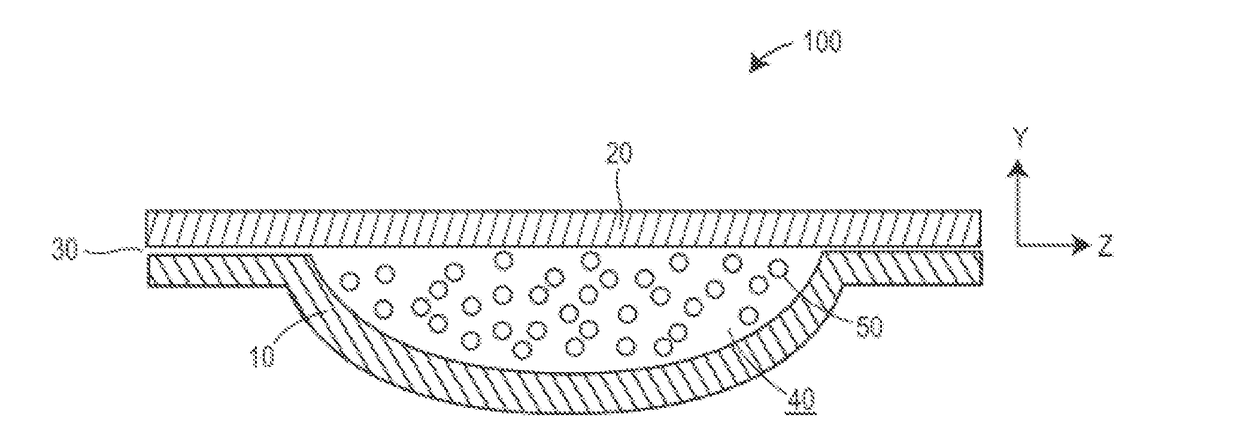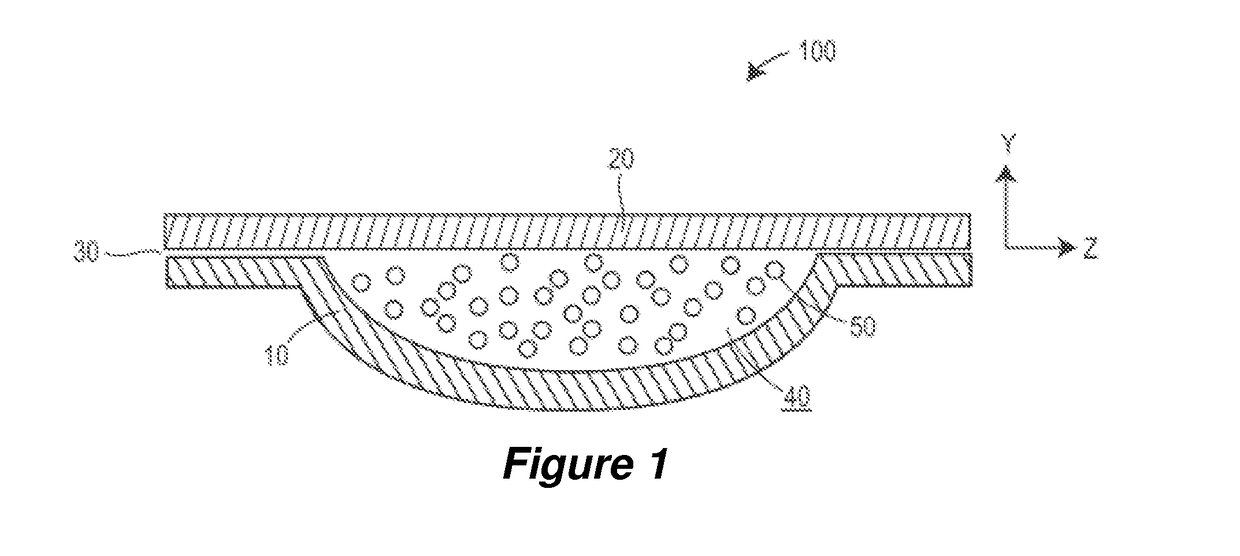Water-soluble polyvinyl alcohol blend film, related methods, and related articles
a polyvinyl alcohol and blend film technology, applied in the field of water-soluble films, can solve the problems of film residue on items in the wash, environmental concerns and energy costs, and arises
- Summary
- Abstract
- Description
- Claims
- Application Information
AI Technical Summary
Benefits of technology
Problems solved by technology
Method used
Image
Examples
examples 6-11
nd Films
[0235]Examples 6-11 represent water-soluble films which were formed, each including a blend of two of the PVOH polymer or PVOH copolymer Resins A-E. Specific blends included PVOH Resins A and E (Example 6), A and C (Example 7), A and D (Example 8), B and E (Example 9), A and B (Example 10), and C and E (Example 11). The blend films included 100 phr combined of the two resins forming a given blend in a range of relative weight proportions as set forth in Tables 2-7 below, while plasticizers and other additives were present in the amounts and types as described for Comparative Examples 1-5. Aqueous compositions of the foregoing blend film compositions were cast to form 3.0±0.15 mil (or 76.2±3.8 μm) film samples, which were tested for their DC residue values, TS values, and MOD values by the above methods. Tables 2-7 summarize the resin and film properties for Examples 6-11. The first and last entries for each of Tables 2-7 represent the single-resin limit for the film formulat...
example 12
Blend Films
[0241]Example 12 represents a series of water-soluble films based on a blend of PVOH copolymers and three different plasticizers, including glycerin, sorbitol, and dipropylene glycol. The PVOH copolymer blend is a variable-ratio blend of a first partially hydrolyzed PVOH copolymer including monomethyl maleate (sodium salt) comonomer (MMM) and a second partially hydrolyzed PVOH copolymer including an acrylamido methylpropanesulfonic acid (sodium salt) comonomer (AMPS). The films included (i) their respective PVOH copolymer resins (100 weight parts per hundred resin weight parts (phr)), (ii) glycerin plasticizer (16.2 phr), (iii) sorbitol plasticizer (10.4 phr), (iv) dipropylene glycol plasticizer (10.4 phr), (v) a modified starch filler (about 2-4 phr), (vi) surfactants and other process aids (about 5-7 phr), and (vii) residual water. Total plasticizer loading was 37 phr. The amount of PVOH-co-MMM in the copolymer blend ranged from 0 wt. % to 100 wt. %. Aqueous composition...
example 13
ve Compositions
[0243]Tables 9-17 show illustrative compositions that may be combined with the articles described herein. For example, the compositions below, which are intended to be non-limiting examples, may be encapsulated in the water-soluble films described herein, for example in a pouch.
[0244]A bleach additive can include the ingredients presented in Table 9.
TABLE 9AWt. %Sodium Percarbonate25Bleach activator17Sodium Carbonate15Sodium Citrate10Zeolite10Sodium Sulfate15Enzymes2Optical brighteners2MiscellaneousTo 1001Tetraacetyl ethylene diamine
[0245]Granular laundry detergents can include the ingredients presented in Table 10.
TABLE 10BCDEFG(wt %)(wt %)(wt %)(wt %)(wt %)(wt %)Linear alkylbenzenesulfonate87.176.57.57.5AE3S04.805.244C12-14 Alkylsulfate101000AE72.203.2000C10-12 Dimethyl0.750.940.980.9800hydroxyethylammonium chlorideCrystalline layered silicate 4.104.8000(d-Na2Si2O5)Zeolite A505022Citric Acid35342.53Sodium Carbonate152014202323Silicate 2R (SiO2:Na2O at ratio 2:1)0.08...
PUM
| Property | Measurement | Unit |
|---|---|---|
| Tensile Strength Test | aaaaa | aaaaa |
| viscosity | aaaaa | aaaaa |
| viscosity | aaaaa | aaaaa |
Abstract
Description
Claims
Application Information
 Login to view more
Login to view more - R&D Engineer
- R&D Manager
- IP Professional
- Industry Leading Data Capabilities
- Powerful AI technology
- Patent DNA Extraction
Browse by: Latest US Patents, China's latest patents, Technical Efficacy Thesaurus, Application Domain, Technology Topic.
© 2024 PatSnap. All rights reserved.Legal|Privacy policy|Modern Slavery Act Transparency Statement|Sitemap



